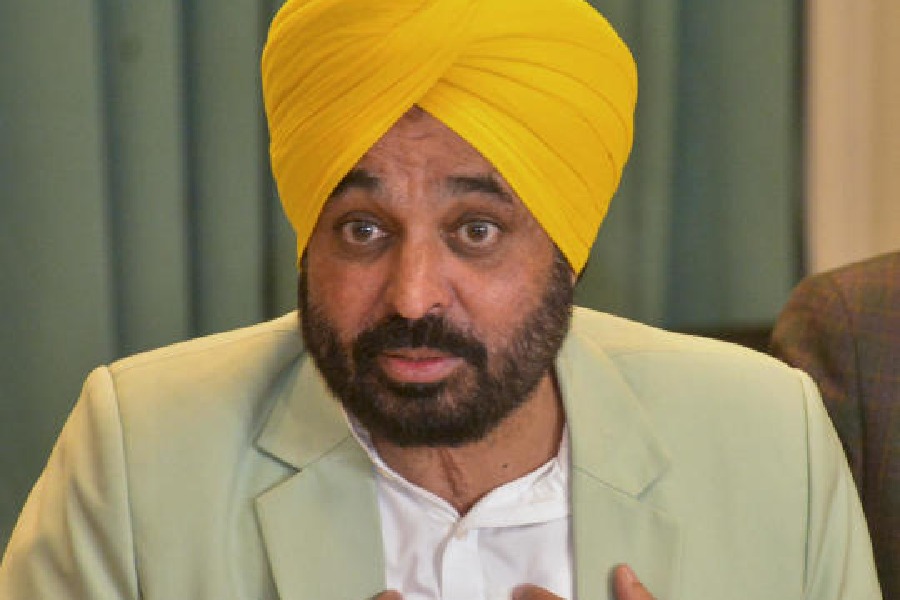Should it be called the Modi Effect? As we know, India’s stock markets soared after exit polls forecast the Narendra Modi government would sweep back to power with a huge majority and then crashed 6 per cent when the polls turned out to be wrong. But that meltdown was only a blip. The markets soon rebounded to test new highs after investors realised the BJP would return, albeit in coalition.
So here’s a question: have shareholders become a new Modi fan constituency because they believe only he can keep stock indices surging? Obviously not everyone votes for the lotus because it keeps their shares climbing. But many in the market believe Modi is the best guarantor of a solid ROI or return on investment and so may be inclined to support the BJP.
Don’t forget that back in 2014, the benchmark Sensex was in the mid-20,000s and it’s now around 75,000. The stock market’s been on a roll for eight years. But it’s been in the last four years that shares have gone through the roof. Since 2020, the market’s added over $2 trillion in market value and India’s total market capitalisation is closing in on $5 trillion. Indian investors in the past year have been pouring some $2 billion into the market each month. Morgan Stanley’s chief India equity strategist Ridham Desai says the country’s stock market is “setting up for the longest bull run its history.”
Driving Desai’s rosy view is the widely held belief that India’s just getting started on what will be a decade of record growth that could see the country’s economy surpass Japan and Germany to become the world’s third-largest by 2027. In tandem, the stock market’s on track to rank third by capitalisation globally by the decade’s end, up from fifth place now. Desai believes this is going to keep pushing shares higher. “These and other changes that could boost earnings 20 per cent annually for the next five years still aren’t baked into share prices,” says Desai.
Currently, Indian households are less exposed to equities relative to other assets such as gold, but that’s all going to alter, analysts believe.. A 2015 change allowing retirement funds to invest in stocks is expected to create a demand cycle akin to what the US experienced from 1980 to 2000, after a new law allowed employees to put some of their paycheck toward tax-deferred investment in stocks via retirement plans. “Domestic flows to US stocks surged over two decades after that change. We see a similar boom in India coming,” Desai says. But in India’s case, “it can last longer than 20 years given its much younger population and the low starting point of equity ownership,” he adds.
To many investors and analysts, buttressing the market is the strong government image Modi and the BJP have projected. Mutual fund investors are “very happy with a Modi victory because they feel that will boost the value of their investments,” says one analyst.
How big the Modi investor constituency is right now is hard to calculate. The two share depositories – NSDL and CSDL – have a staggering 150 million demat account-holders between them with the booming market attracting new players each month. CSDL held 88 million demat accounts in June 2023. That’s shot up to 118 million currently. Giant broker Motilal Oswal says it registered 1.45 lakh new accounts in the third quarter of FY24. But these colossal numbers come with strong riders. Are there that many stock market investors in India? The answer is definitely ‘no’ as people have multiple accounts.
So how many investors are pouring money into the market on a regular basis? Market analysts reckon there are anywhere between 35 million and 70 million active investors. Is having the BJP government at the Centre a draw for many of these relatively new stock market players? Many investors right now are convinced it’s the Modi factor that keeps the markets aloft. Says one analyst: “Domestic investors definitely have faith in Mr Modi.” Says an investor: “He ensures a continuity of rules governing business.”
For an indication of investors’ faith in Modi, look at investment consultant P. R. Sundar’s potential scenarios outlined just before the exit polls were announced. Sundar reckoned polls showing the BJP doing well would send markets shooting upwards which is what happened. The markets, he predicted, would surge further, if the final results turned out to be in the BJP’s favour. And the markets, he forecast, would “crash” in the event of a BJP setback. That’s exactly what happened when the BJP failed to secure an absolute Parliament majority. Indices fell nearly 6 per cent in one day though the market recovered swiftly as investors “bought the dip.”
Still, it all begs the question of what happens if the market starts going south dramatically because the economy stumbles or some other factor? Are all these investors natural Modi supporters? Or could many desert the ship if share prices went south? Stock market investors are notoriously fickle and if the share market lurches lower for any length of time, the BJP could lose this vote-bank very rapidly.
And not everyone’s on board with the notion that the Indian share market is only going to climb. Amid the market excitement, health warnings are circulating that share prices are overheating. Sanjeev Prasad at Kotak Institutional Equities says what’s developing is an “unshaken faith about high returns from the equity market” and a "mob mentality." Prasad highlights what he calls “extreme euphoria” among individual investors who are ignoring fundamentals such as earnings and says it’s leading to “distended valuations” across the board.
The ample liquidity as investors have piled into the market also has fuelled massive rises in small, sometimes low-quality stocks with investors believing they will achieve high returns “irrespective of prices and valuations,” he said. “Narratives have taken firm root, while numbers and valuations have withered,” Prasad said.
So where should investors be putting their money? Kotak figures financials like banks are trading at reasonable prices. But consumer, IT services, and pharmaceuticals are “at full-to-rich valuations;” which means that the shares have risen about as far as they can. Automobiles, capital goods, and public sector companies, meanwhile, are at “euphoric valuations.” That means some shares could be riding for falls – big ones.
“While some sectors reflect the strength and long-term growth of the Indian economy, others show "extreme euphoria” says Kotak. The Indian market is a mix of "rightful optimism and mistaken euphoria,” the investment house says. There’s worry that investors, especially from low income households, have no financial buffers to protect them in the event of a bear market.
There are others who figure the Modi factor is overdone in driving markets and shares could do well under the opposition too. Says one investor: “The markets would do fine if someone like the Congress Party’s P. Chidambaram was the finance minister.”
Mark Mobius, who’s known as the Indiana Jones of emerging market investing, says he’s not worried by the pricey valuations of Indian shares. He notes India’s fast growth and says the fact that some sectors may be expensive only highlights the importance of being “well-diversified.”
Analysts agree that there’s definitely value out there if India keeps going with its development agenda, focusing on investment in areas like healthcare, housing, green energy, defence, railways and roads and manufacture. But the bottom line for investors is ‘Be careful out there.’ Choose wisely and don’t ever think what goes up can’t come down.












